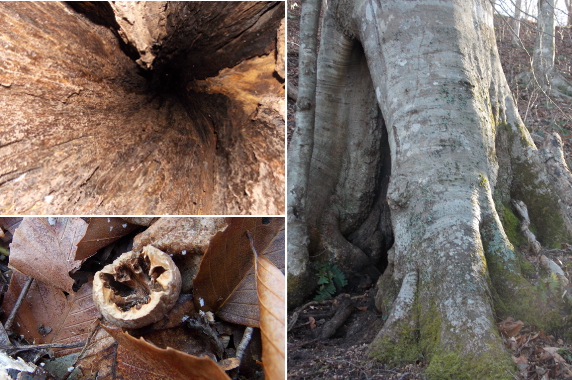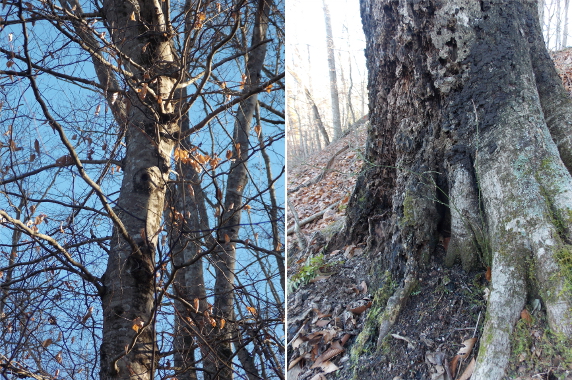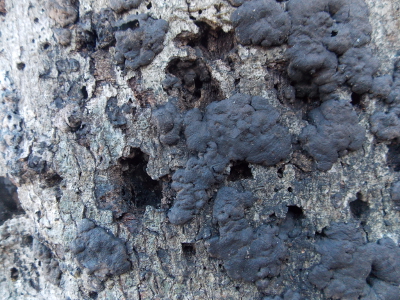
Venerable beeches along the trail

I reached the stump dirt tree with my trail
on New Year's Eve, which marks the first tenth of a mile of built
trail. I'm thrilled to have an easy route to this venerable old
beech since I love passing by, but have rarely scrambled up to it in the
past.
This time around, I
noticed signs that a flying squirrel has been living up in the hollow
center. The base of the tree is littered with gnawed hickory nuts
and walnuts, the tops taken off rather than the whole shell shattered
the way gray squirrels tend to do. Maybe that flying squirrel we saw last spring moved here after we accidentally scared it away from its previous home?

Even though I sound a bit
bloodthirsty saying this, I was also glad to see a
stump-dirt-tree-in-training not far away. The slightly younger
beech was starting to rot out on one side, the bark covered with Carbon
Cushion fungus. Luckily, many happy beeches dot the hillside, so  watching one tree slide from middle to old age is just a sign of free potting soil in the future, not a decline of the forest.
watching one tree slide from middle to old age is just a sign of free potting soil in the future, not a decline of the forest.
Progress on my trail may
slow down a bit now that December is over and Mark and I are headed back
to work on farm projects. Top of our list is figuring out a way
to stop the chickens from pooping in their nest boxes, followed perhaps
by work on the new pasture and bathtub. But I've sunk my teeth
into this woodland project, so I may keep stealing a half hour here and
there to go chisel into the slope and watch the world go by.
Although I was leery at first of Mark's idea of taking December off from
farm projects, the idea has grown on me (as usual) and I think he was
on the right track all along.
Want more in-depth information? Browse through our books.
Or explore more posts by date or by subject.
About us: Anna Hess and Mark Hamilton spent over a decade living self-sufficiently in the mountains of Virginia before moving north to start over from scratch in the foothills of Ohio. They've experimented with permaculture, no-till gardening, trailersteading, home-based microbusinesses and much more, writing about their adventures in both blogs and books.
Want to be notified when new comments are posted on this page? Click on the RSS button after you add a comment to subscribe to the comment feed, or simply check the box beside "email replies to me" while writing your comment.

if night time roosts are higher than the nest boxes, the nests will stay cleaner you will nead need plenty of room on the roosts for all hens to spread out